When I was writing about the species of milkweed that is found in the Middle East, the Sodom’s Apple plant. I mentioned that I had spotted something that looked like milkweed in my pasture.
But it was not milkweed. It was dogbane — Apocynum cannabinum.
Dogbane and milkweed look very similar, before they bloom. They both have waxy leaves and both give a milky discharge if they are injured. Here are some tips for telling them apart.
Milkweed plants (asclepias) are bigger than dogbane and their leaves are broader. There is a slight reddish tinge to the vein that runs through the middle of the leaf, dividing it in two. The leaves are more “waxy” on the milkweed than the dogbane.
Even before the flowers bloom, the flower buds are bigger on the milkweed than on the dogbane plant, and they are placed much closer together, to make a composite flower. The dogbane cluster is looser, and there are fewer individual buds in each cluster.
When the leaves of the milkweed are injured, the white sap that comes out looks like Elmer’s glue.
The dogbane flowers, when they open, are usually white.
In contrast milkweed flowers are more colorful. The can be purple, pink or orange, depending on the variety.
Dogbane flowers are tiny and delicate. They are easy to overlook.
A sweat bee when it lands on a dogbane flower entirely obscures it from view, the flower is so small. Large butterflies, like spangled fritillaries, can sit on milkweed flower, and still most of the flower is visible. Of course, those are composite flowers we are looking at.
Even though the flowers are arranged in clusters on the dogbane, too, they don’t quite form a larger composite flower, as their stems are longer, and they each seem to be going a different way.
But even when in bud, the milkweed flowers form a collective, single entity.
The milkweed flower buds are bunched so closely together that they seem to act as one. Different bunches will form different composite flowers on the same plant.
By the time the flowers bloom, the difference between the the dogbane and the milkweed is unmistakable. But before we see the flowers, a closer examination of the leaves can help.
Copyright words and images 2017 Aya Katz
Update from May 12, 2018
Today I saw both dogbane and milkweed plants side by side long before either had bloomed. Look at the video to get a better idea of the basic differences that don’t involve the flowers.
The dogbane plants are still taller at this point than the milkweed, but the milkweed leaves are broader and more waxy.

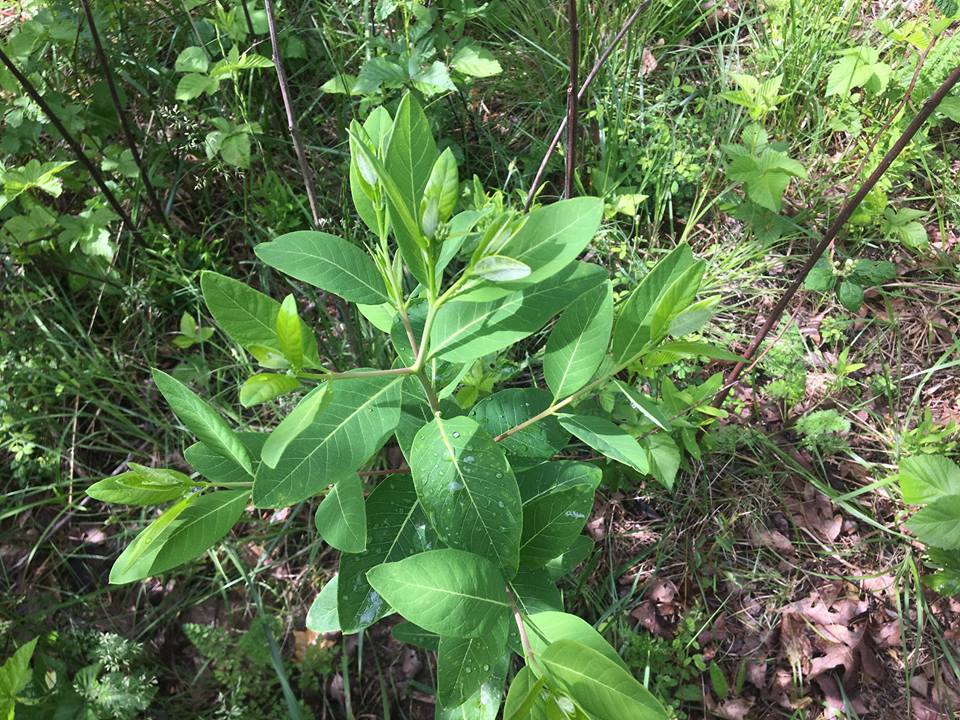
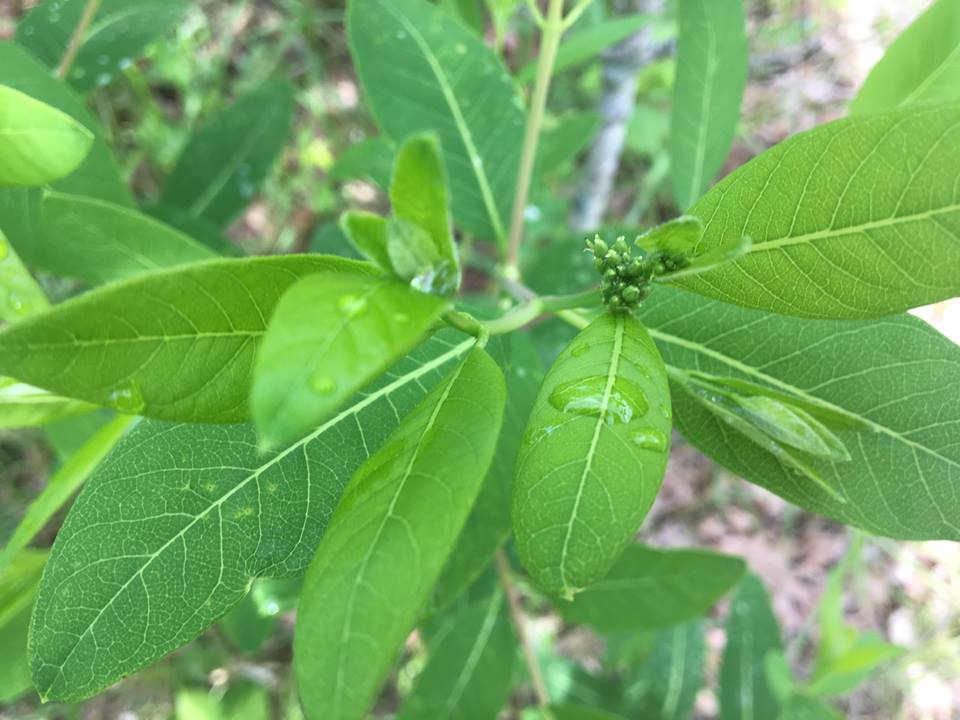
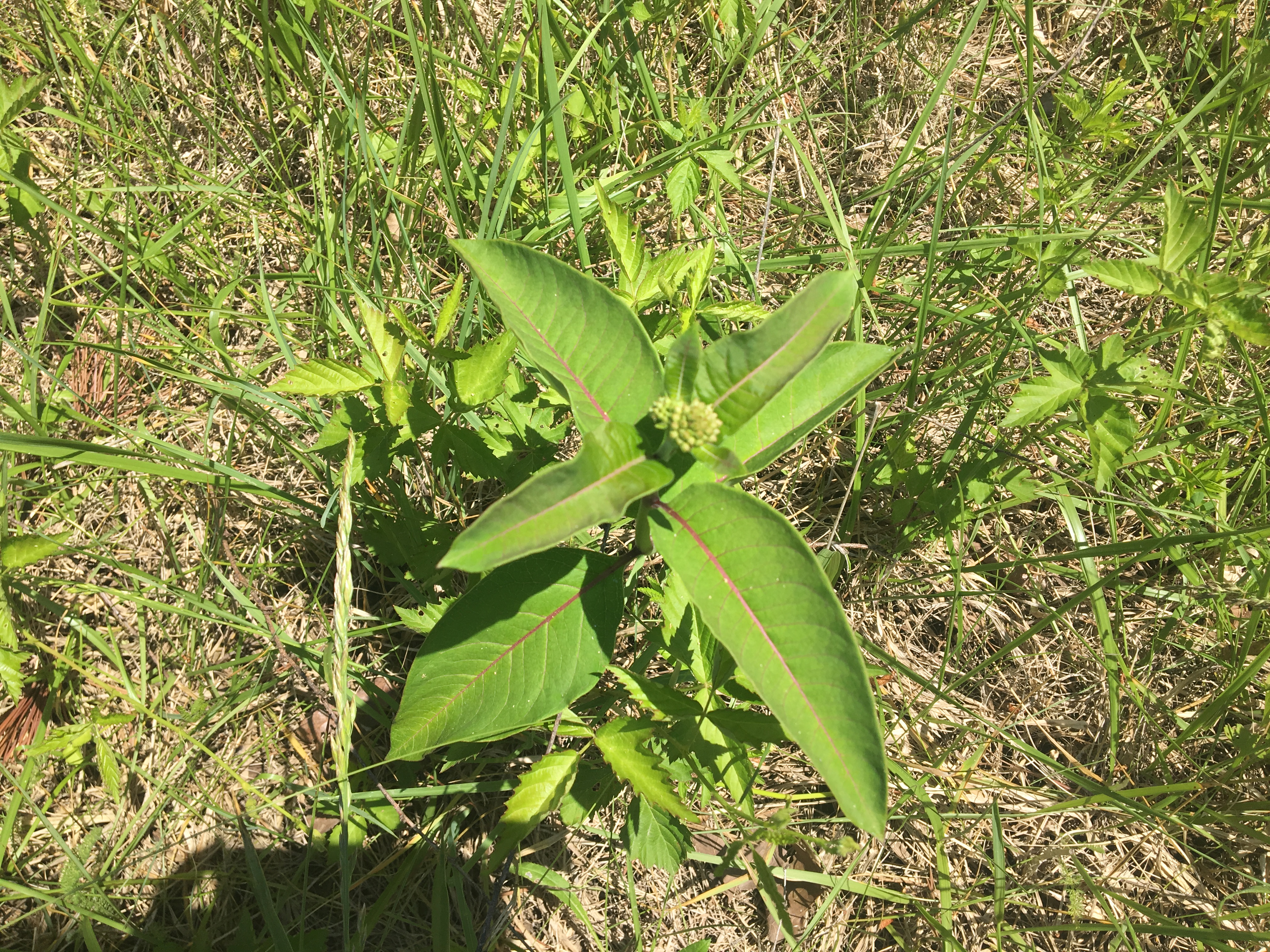
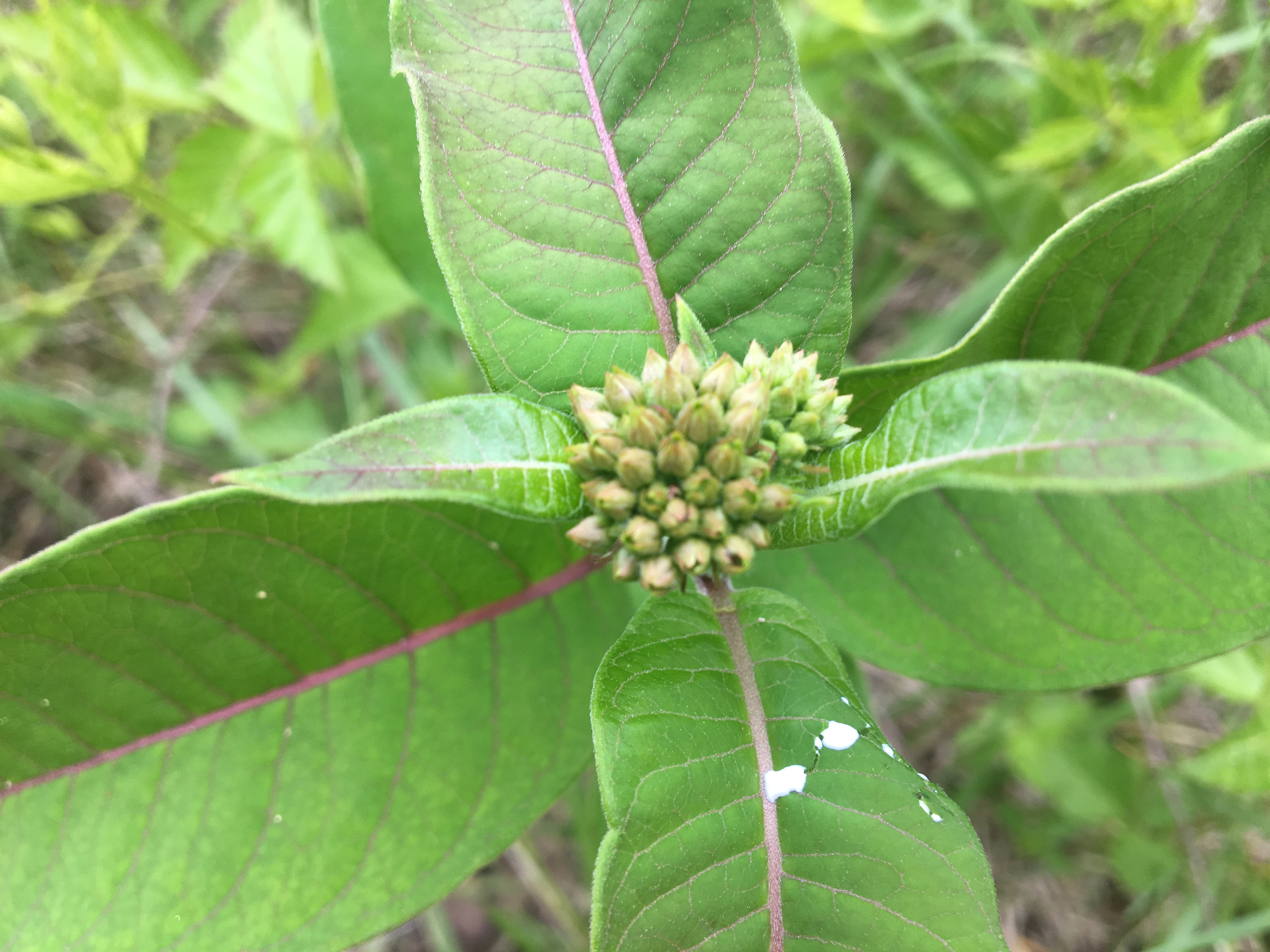
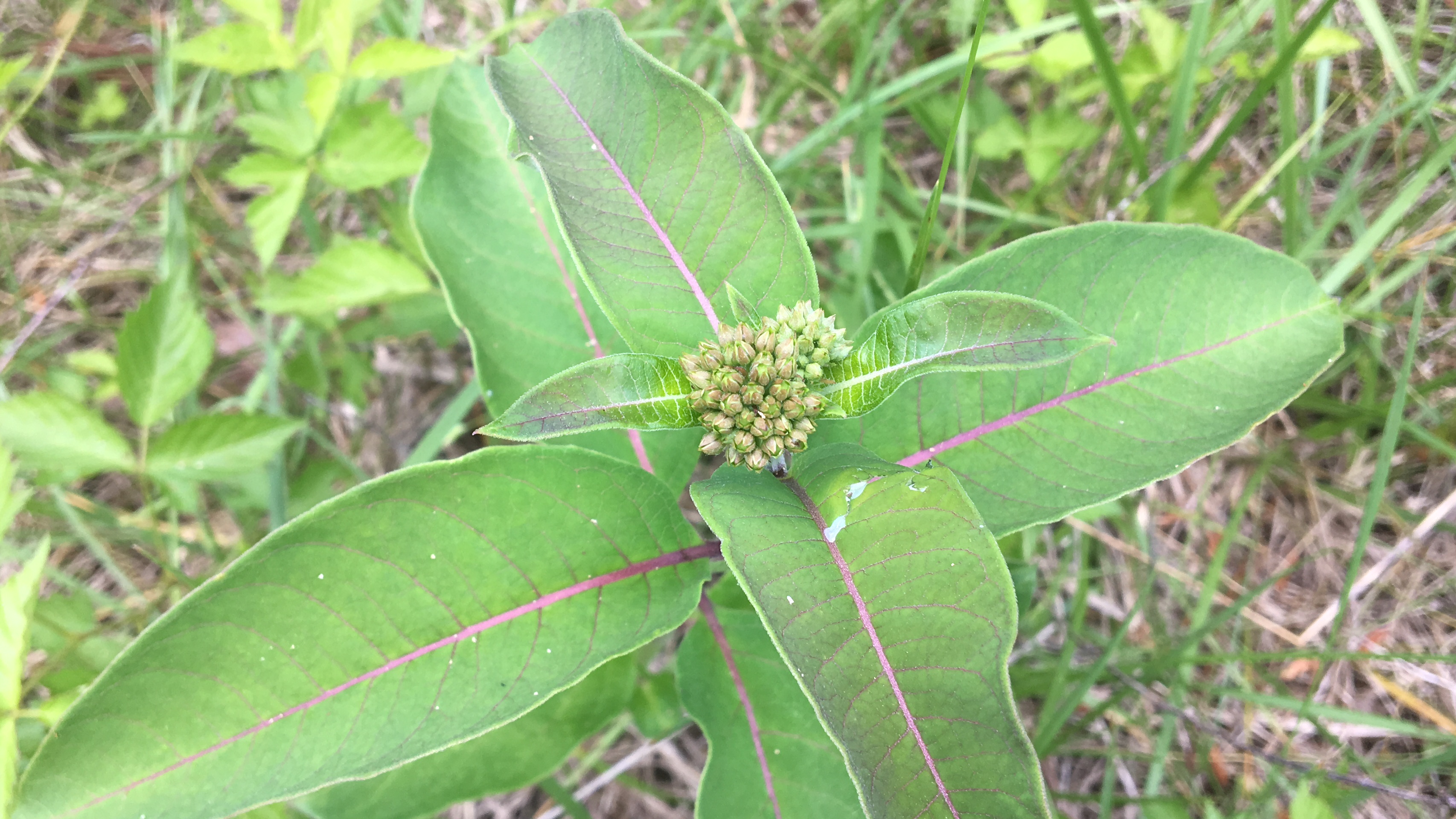
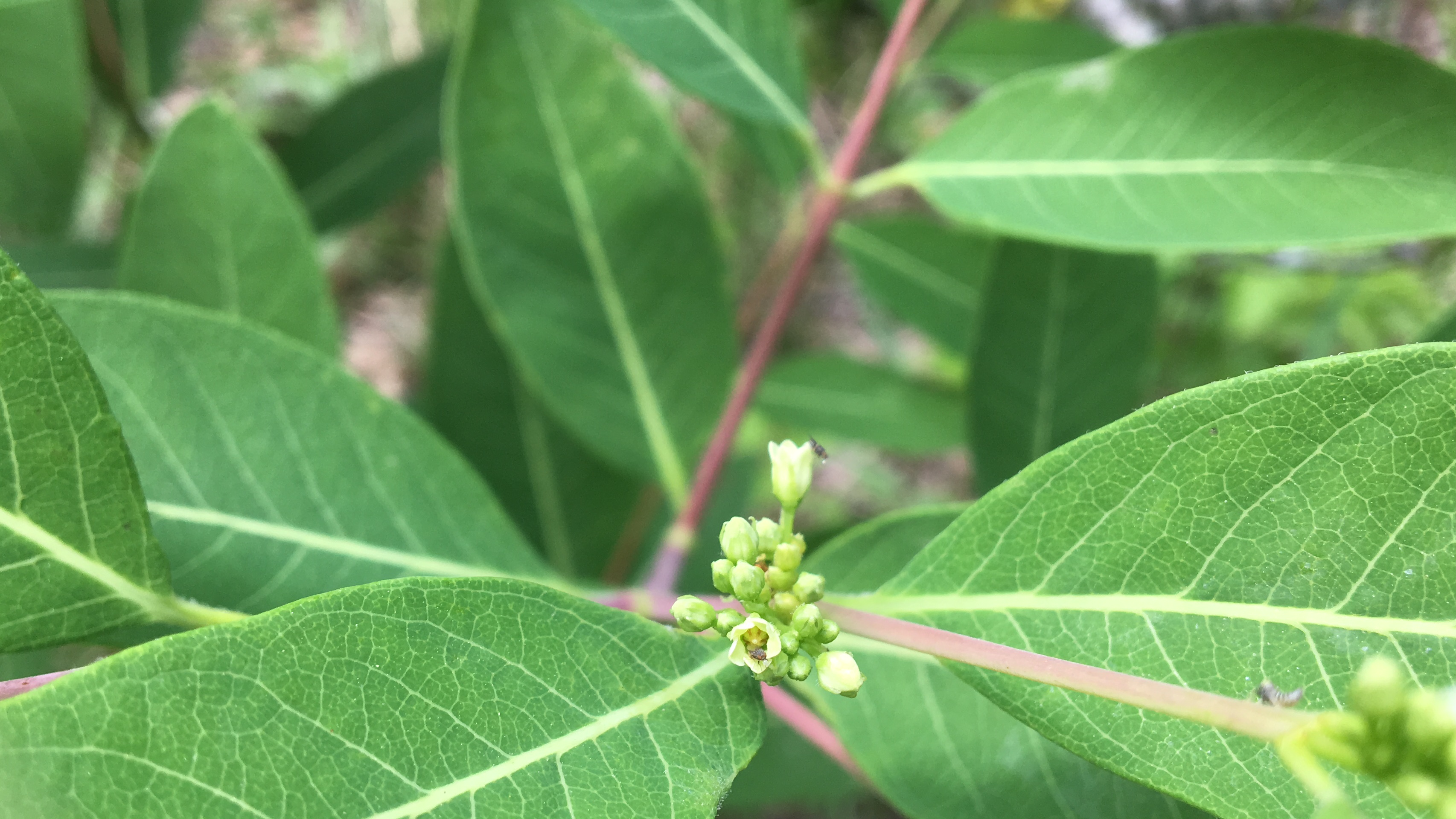
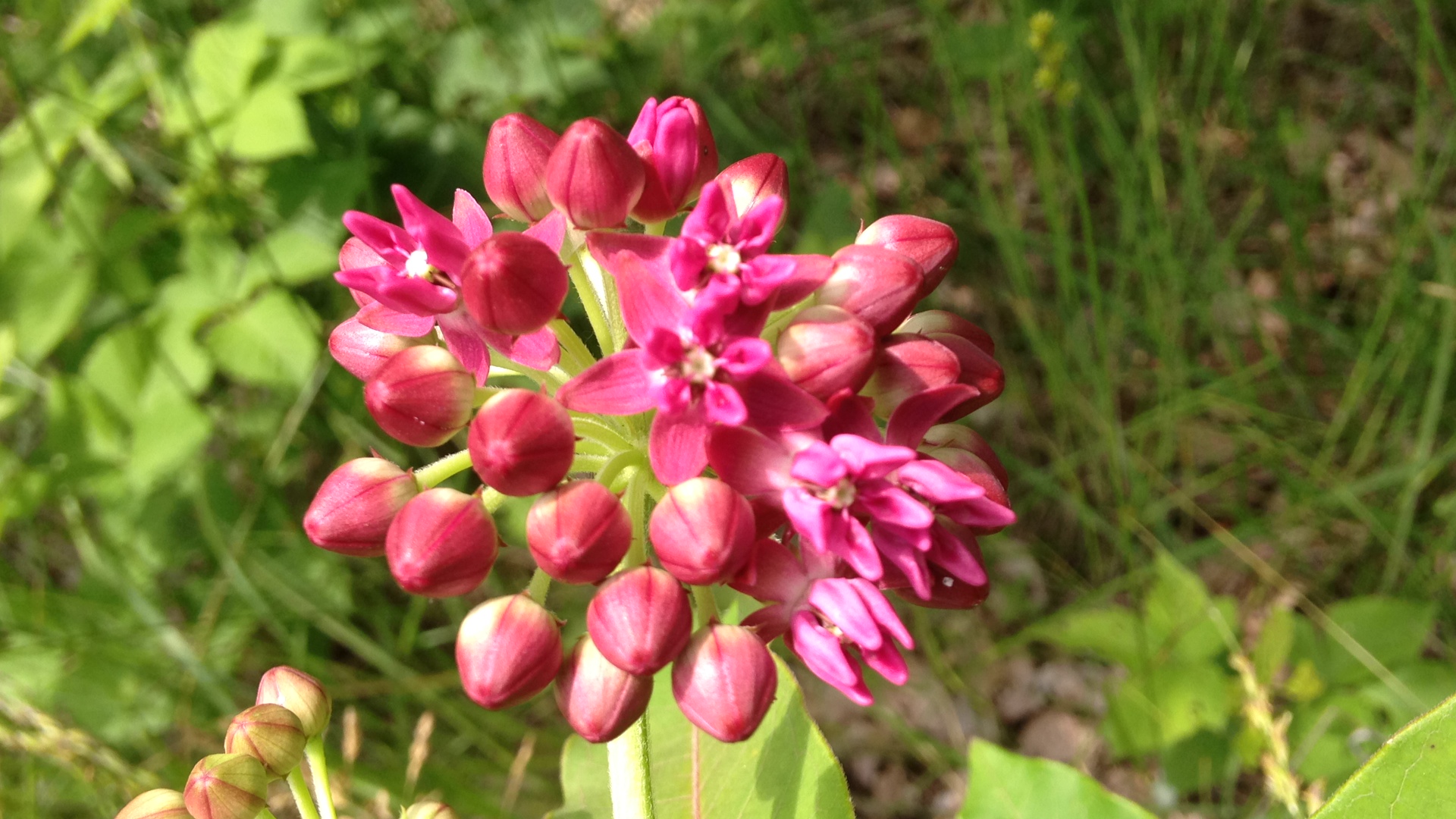
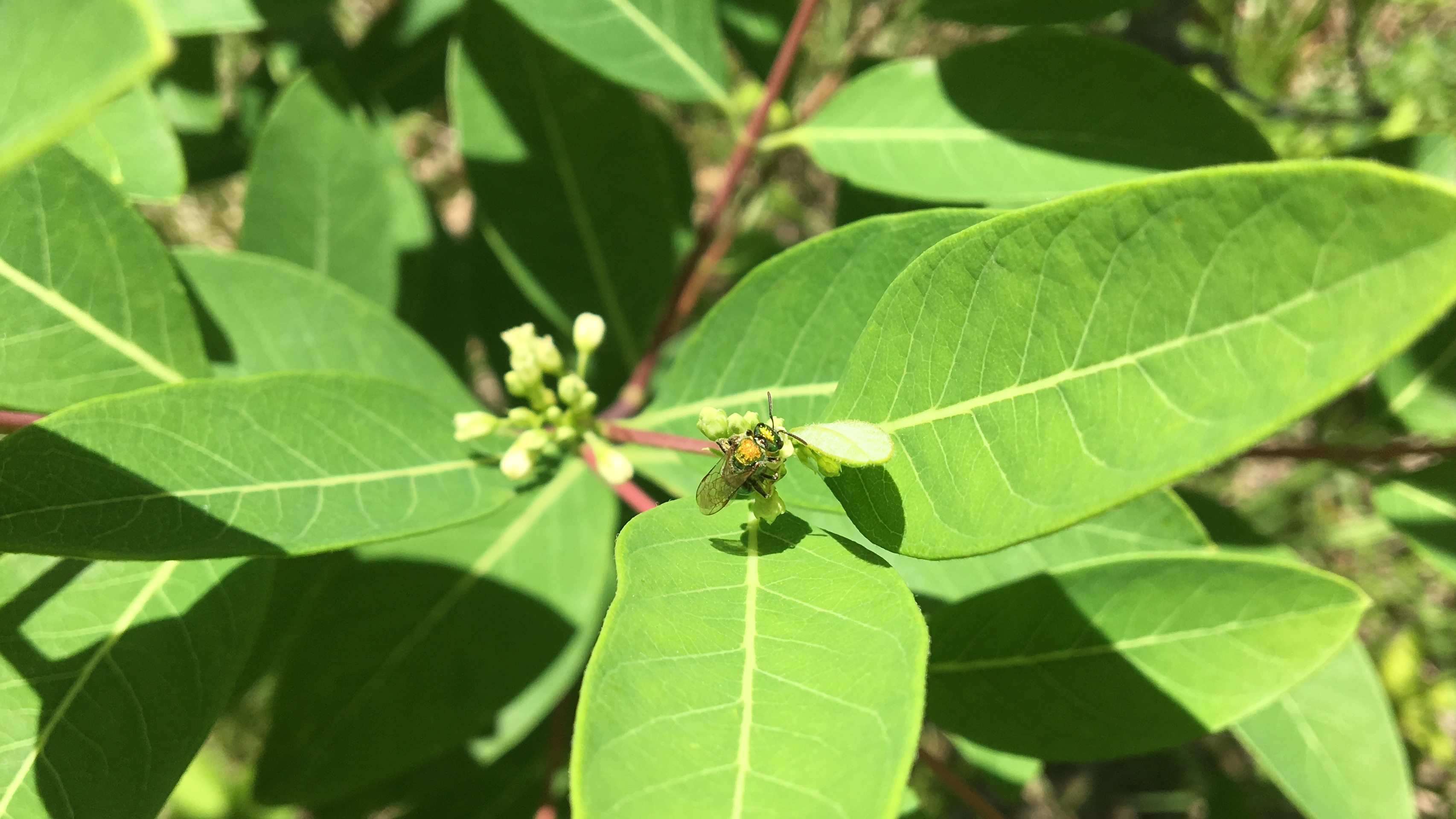
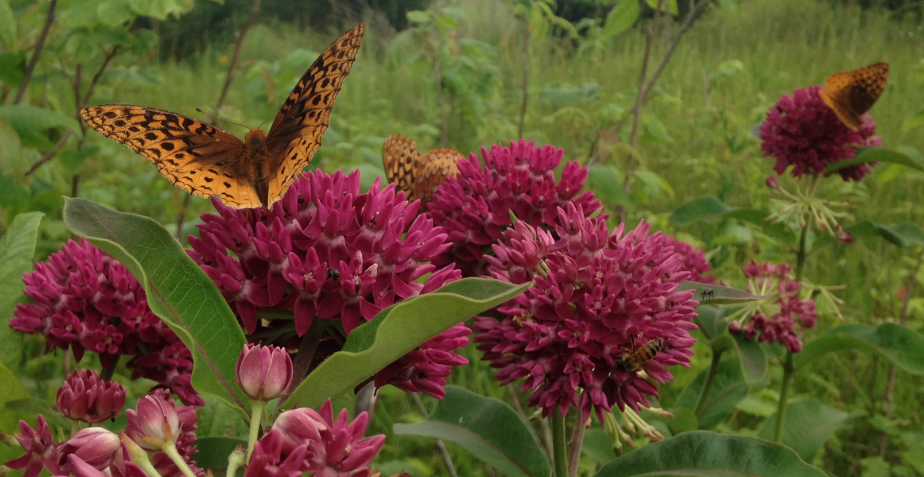
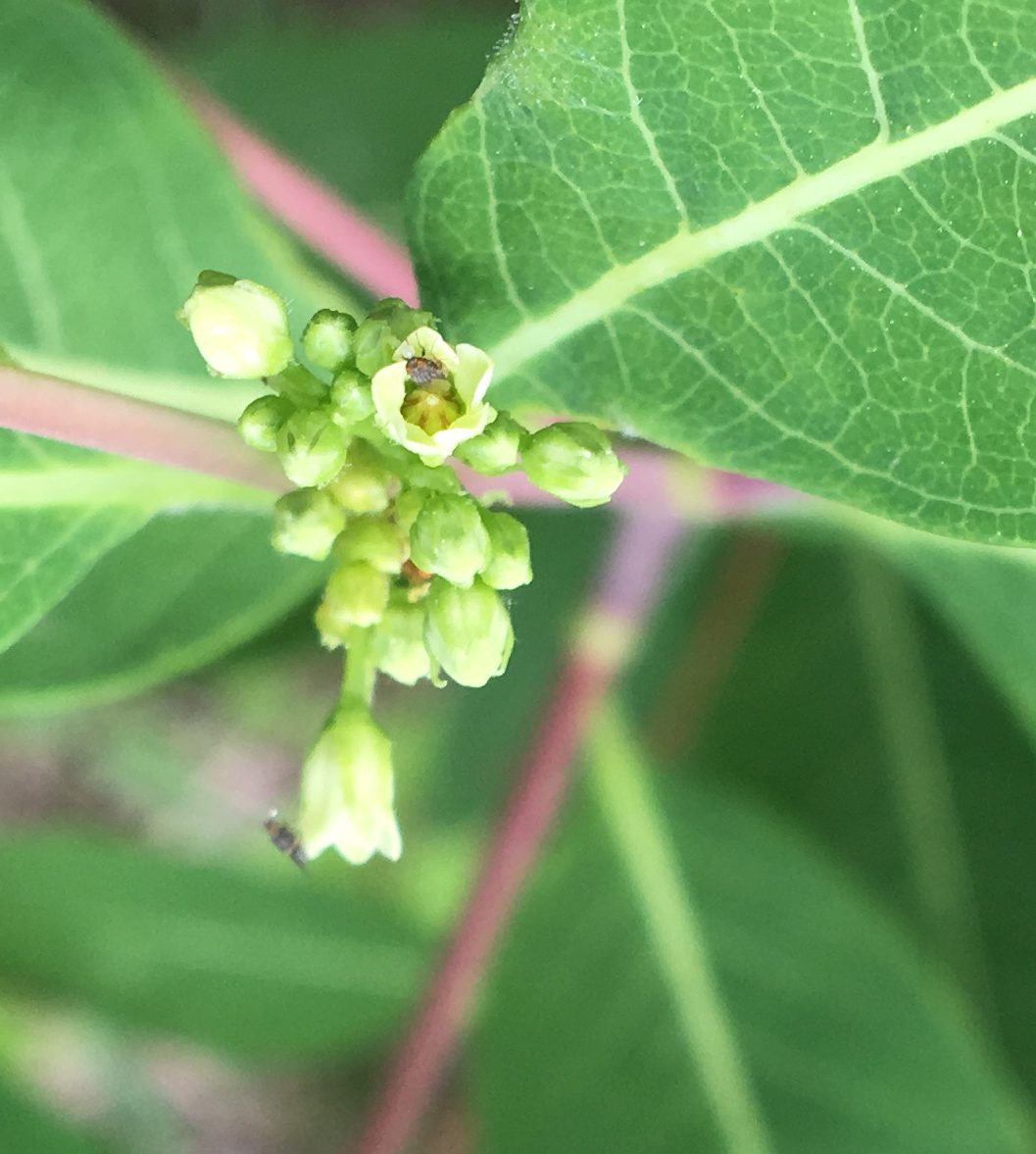
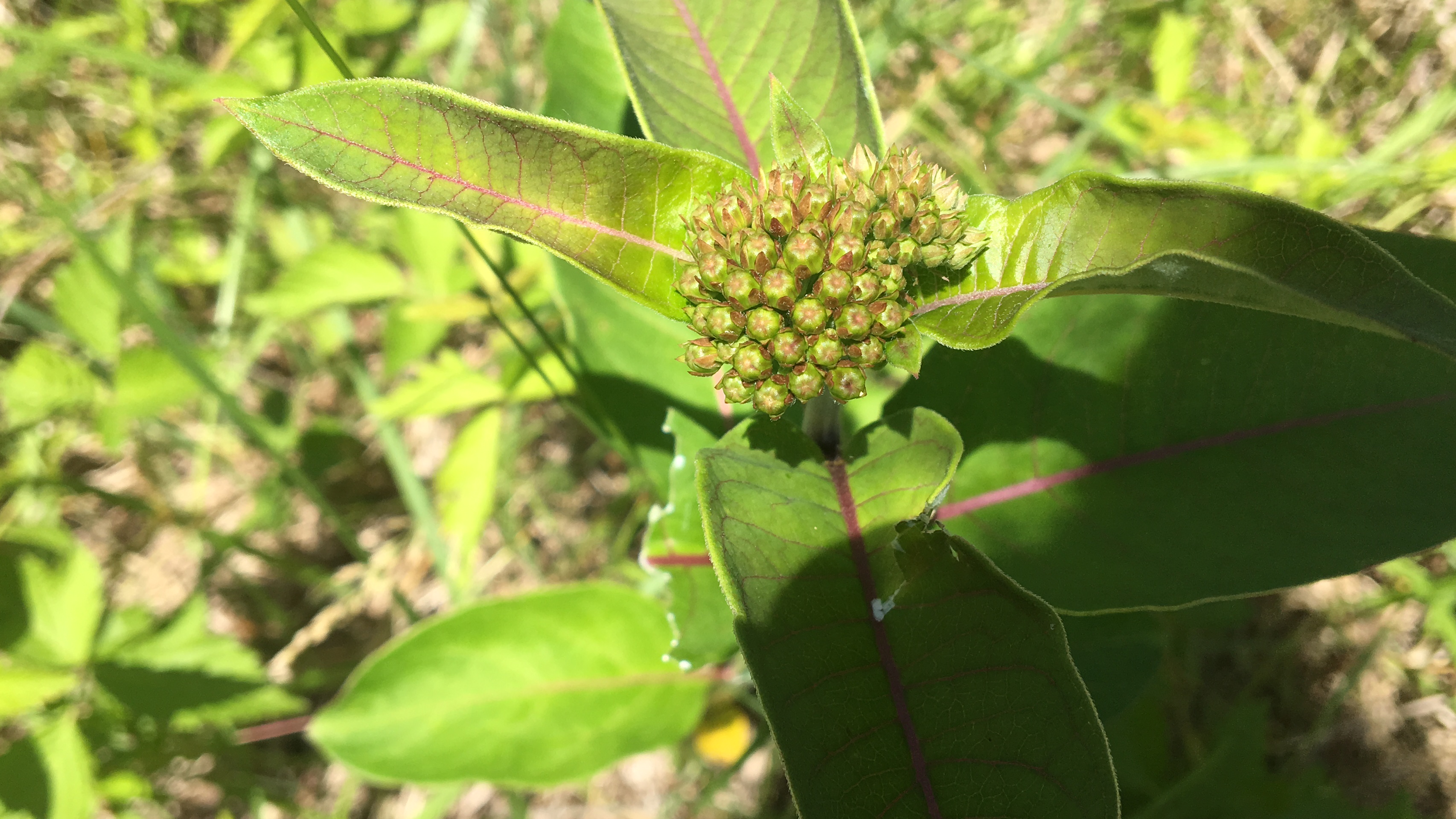
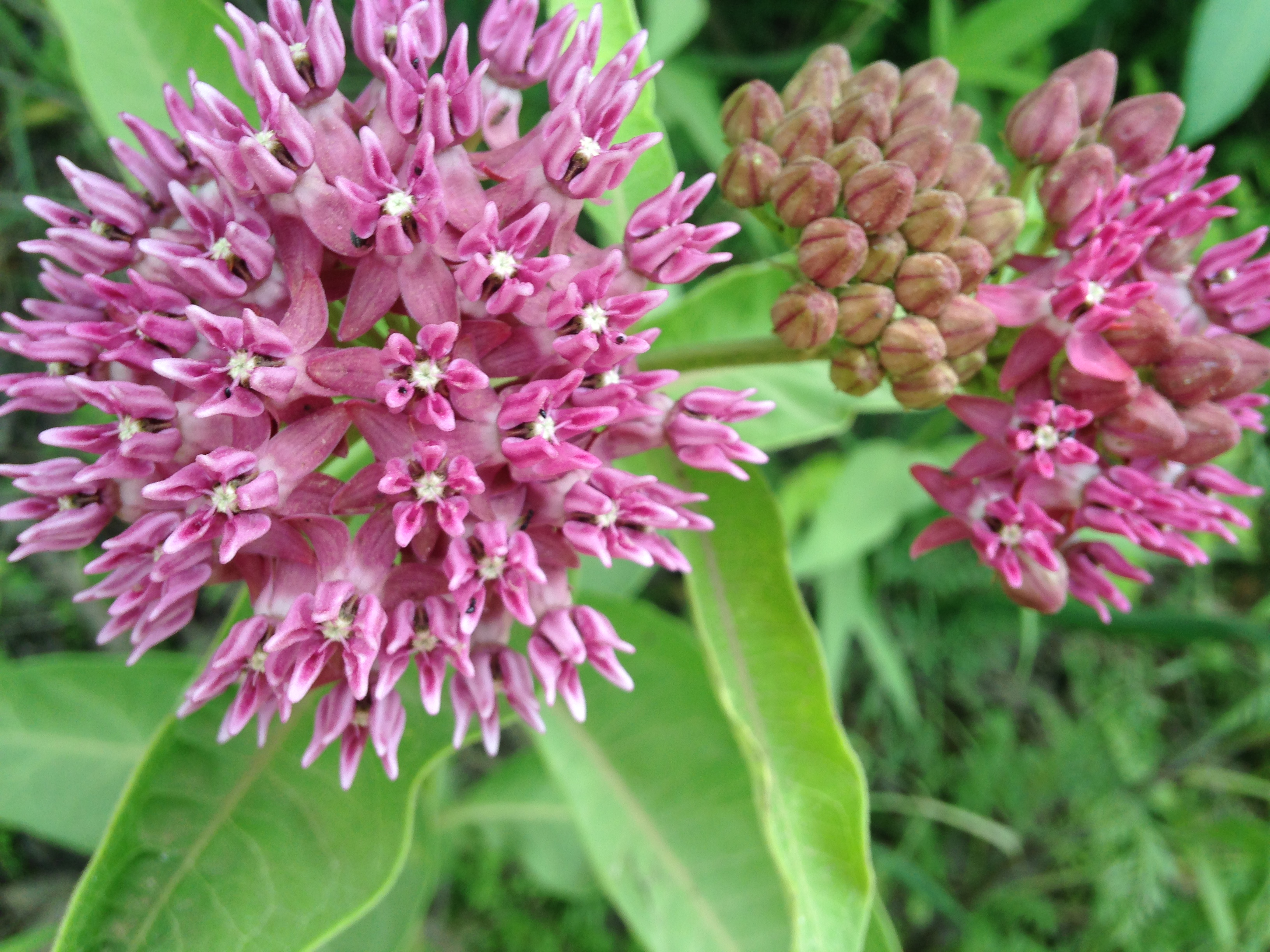
I am excited to learn more about the dogbane plant. I did a Google search just now, and I also learned this plant is a possible source of rubber, and the bark was used by some Native Americans to use a hemp like cloth material. There is so much knowledge to be had when we get away from the viral topics.
Yes, Julia, there really is a lot to learn about these plants, and I am just now starting. The rubber from the dogbane plant can be used to make chewing gum. Now there’s a project for the The Feast Before Us! Ever since they started adding aspertame to all chewing gum in the US, even the kind that is not sugarless, I have wanted to find another source of chewing gum. And as you mentioned, Dogbane is also called Indian Hemp, because the native Americans used it as an alternate source of hemp to cannabis. Hence the Latin name Apocynum cannabinum. And then there are all those folk remedies to treat fever, asthma and rheumatism, among other things!
Great tutorial and pictures to help distinguish the difference between dogbane and milkweed, Aya! Now we have a reference for next year!
Thanks, Kathy! That’s exactly what I was thinking when I decided to write this up — that I might get just as confused next year if I did not have a handy guide.
Pingback: Review of Monarchs and Milkweed by Anurag Agrawal | PubWages
Good video update, Aya! Before I really started learning about Common milkweed I was always fooled by dogbane.
Thanks, Kathy. This particular milkweed in the video is purple milkweed, so I am thinking of also discussing how to recognize the different types of milkweed before they bloom, and to distinguish each from dogbane.
This article describes and shows one species of dogbane and one of milkweed,
without stating the name of either.
The generalization of these observations to the two genera is invalid.
I overlooked the Apocynum species name in the middle of the page.
Were it possible for readers to post photos, I would post mine that shows
the inflorescences that are as large as those of most species of milkweed.
Would you be interested in submitting a guest article on this subject with photos? You could have a byline that links to your own botanical blog, if you have one. You would also need to give your name and a valid email address.
Hi!! We live in Southern Missouri on 80 acres. Last year my son saw a Monarch Caterpillar munching away. This year I almost invested in cows, hemp, or hay. But that is the problem!! Everyone does. So I am investing in butterflies. We have milkweed in our pasture. Or so I thought. I cannot post pictures here. My page is Ozark Mountain Monarch Refuge. I need hell so I can help the butterflies.
this is 2021. Found your post because looking up dogweed. And that is could not be good form Dogs or Cats. Not that my cats go out. However I have been baby’ing a dog weed plant for a couple of years now thinking it was milkweed. Silly me thinking when is this going to get the pods.. do milkweed get pods.. or am I thinking of yet another plant. Anyway the Dogweed is coming out! It totally fooled me! Slowly learning thanks to Google lens and Picture it that is helping me know what is in my own back yard.
Hi, Rose, thanks for your comment. I am not sure whether dogbane is the same as dogweed. Milkweed does indeed get pods, and that is where the seeds are stored. However, on my property the deer tend to eat the flowers before they become pods.